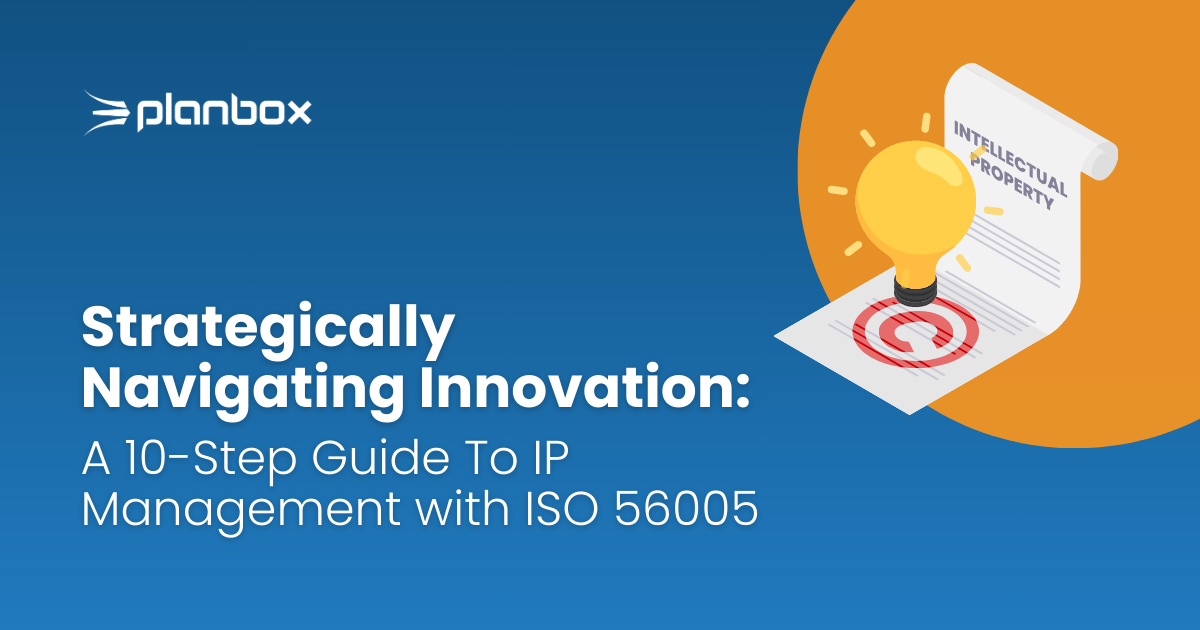This article originally appeared on Forbes.
In an era where ideas are currency, innovation has never been more crucial. Innovation is the cornerstone of progress, fueling growth and driving competitiveness in today’s dynamic business landscape. To harness the power of innovation effectively, organizations must navigate the intricate world of intellectual property (IP) management, a process that involves safeguarding novel ideas, inventions and creations while optimizing business potential. Recognizing the critical role of IP management, the International Organization for Standardization (ISO) has developed ISO 56005, a comprehensive framework to guide organizations on this journey.
1. Understand The Organizational Landscape
A fundamental step in effective IP management is understanding the organization’s context. ISO 56005 emphasizes analyzing both internal and external factors that influence IP management objectives. This entails scanning the external environment for market, technological, legal and political aspects. It’s equally crucial to comprehend internal dynamics such as business strategies and the types of IP assets in the organization’s portfolio. This understanding sets the stage for aligning IP strategies with broader organizational objectives.
2. Develop a Systematic IP Management Approach
IP management isn’t a one-size-fits-all endeavor; rather, it’s a tailored approach that integrates activities, processes and support to optimize IP assets. ISO 56005 underscores the decision-making process of whether to protect innovation outcomes or choose suitable IP protection forms. This decision involves considering copyright, trade secrets, trademarks and other forms of protection. Moreover, managing IP effectively requires addressing both the positive and negative aspects of intellectual property rights, a key consideration highlighted by ISO 56005.
3. Engage Leadership in IP Management
Effective IP management necessitates top management’s leadership and commitment. This involves establishing IP policies, strategies and objectives aligned with innovation strategies. Top management’s involvement ensures that IP management becomes seamlessly integrated into innovation processes. Resources allocation, communication of IP’s importance and fostering continual improvement all contribute to effective IP management. ISO 56005 emphasizes that leadership’s engagement is pivotal to achieving desired IP outcomes.
4. Define Roles and Responsibilities
A well-defined allocation of roles and responsibilities is a cornerstone of successful IP management. This includes the activities that should be clearly identified, documented and shared across the organization. Whether integrated into existing roles or established as dedicated positions, IP management responsibilities cover various aspects, including IP asset management, risk mitigation and value realization. Ensuring clarity in responsibilities fosters a more cohesive and efficient IP management process.
5. Foster An IP-Savvy Organizational Culture
An organization’s culture of innovation plays a vital role in effective IP management. ISO 56005 highlights the importance of creating an environment that promotes IP awareness and participation across all levels. Obtaining oversight from top management, providing IP awareness training and empowering employees to contribute to IP management collectively create an enabling work environment. This culture fosters the integration of IP considerations into daily operations, enhancing the overall IP management process.
6. Invest Human Capital for IP Success
IP management requires competent individuals who understand its intricacies. It is essential to identify the necessary competencies, provide education and training, and assess changing requirements. The involvement of multidisciplinary expertise, both internal and external, is crucial for successful IP management. By nurturing knowledgeable professionals, organizations can ensure that IP assets are effectively managed and leveraged.
7. Treat IP As An Investment
IP management isn’t just a protective measure; it’s an investment that yields returns. ISO 56005 emphasizes recognizing the financial implications of IP management. Proper allocation of financial resources, understanding financial opportunities and constraints, and establishing investing principles are integral to optimizing the IP management process. By viewing IP management as a strategic investment, organizations can unlock its potential to drive business growth.
8. Navigate Legal Considerations Effectively
Navigating the legal landscape is crucial for IP management. ISO 56005 stresses the need to understand the legal nuances tied to IP, support legal activities during innovation, tackle legal challenges and keep comprehensive records of IP and innovation. This ensures compliance, protects against third-party IP risks and understands the duration of IP protection.
9. Design An Effective IP Strategy
An effective IP strategy is the cornerstone of successful IP management. ISO 56005 underscores the importance of aligning IP strategy with innovation and business strategies. By integrating IP management goals with broader organizational objectives, organizations can safeguard innovation assets, optimize their business potential and enhance overall competitiveness. Developing and implementing a robust IP strategy is key to reaping the rewards of innovation.
10. Integrate IP Management In The Innovation Process
The iterative and non-linear nature of innovation requires seamless integration with IP management. ISO 56005 aligns with this concept by highlighting the role of IP management in each phase of the innovation process. From identifying opportunities and creating concepts to validating and developing solutions, IP management ensures that innovation outcomes are effectively protected and leveraged. This integration optimizes the efficiency of innovation while safeguarding IP assets.
Ultimately, ISO 56005 provides organizations with a comprehensive roadmap to navigate the multifaceted world of IP management. By understanding the organizational landscape, fostering a culture of IP awareness and seamlessly integrating IP management with the innovation process, companies can safeguard and optimize their innovation outcomes. In a rapidly evolving business landscape, staying ahead means not just innovating but also effectively managing and protecting those innovations. As organizations embrace ISO 56005, they’re not just guarding their IP but ensuring a brighter, more competitive future. Now is the time to elevate your innovation game and strategically manage your IP.

Ludwig Melik
CEO at Planbox and author of the Future-Fit Manifesto. I help organizations build a sustainable culture of innovation. Follow me on Twitter or LinkedIn.

